By Peter Porteous
I had never been to Rome so it was about time I matched the ancient ruins and heavenly basilicas in my head with the reality of a modern city aware of its extraordinary heritage. For a stay of less than a week, we knew we would only see a fraction of what we wanted, so my wife Prue and I decided to settle for enjoying the cultural challenge of two or three tourist destinations between some relaxed dining. It was November 2017 that with our Lonely Planet guidebook, we flew EasyJet to Fiumicino Airport to go exploring.
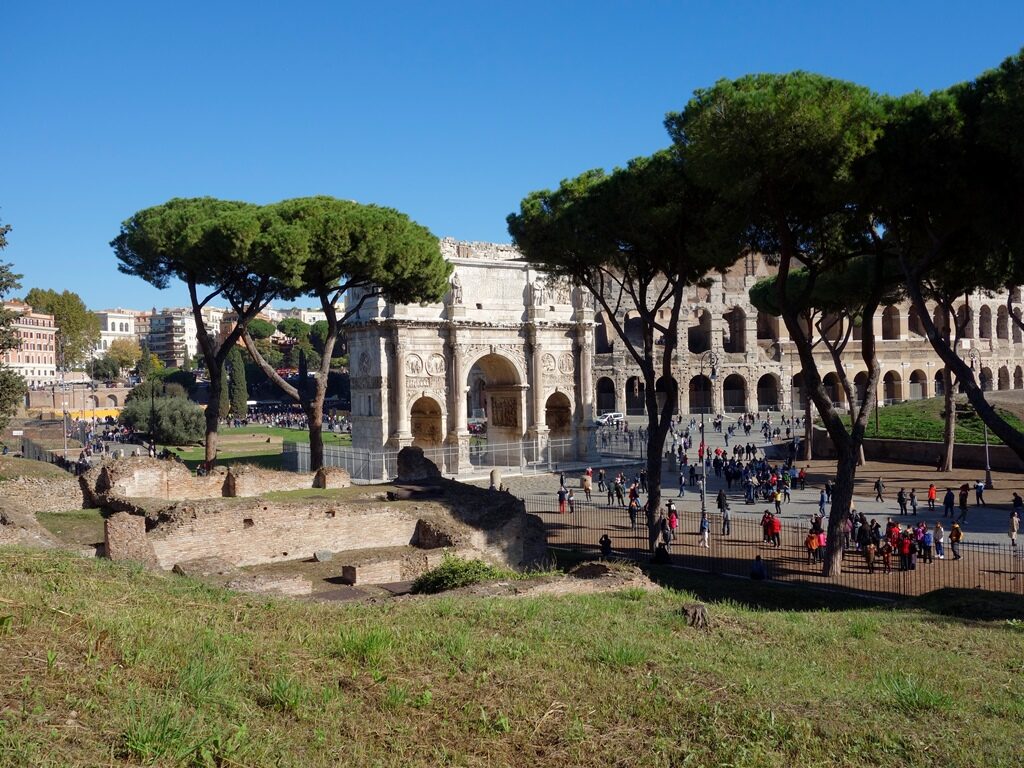
Our B&B was just ten minutes from the Vatican and called ‘Sweet Dreams in St Peter’s’. Behind its quirky name it was impeccably run by Ivanca Corlone, whose English was better than our Italian and she helped us to decide what to do and where to eat. Our first restaurant was the Osteria dei Pontifici which is close to the walls of the Vatican and the two of us had a bottle of wine and a meal for less than 40 Euro. The atmosphere inside was of Toulouse Lautrec, except that here there were large oil paintings of popes in their red robes staring down at us from the walls. “Bless me father ….!”
Security in Rome this year was extraordinarily tight with armed soldiers at street corners leaning on their Landrover Defenders and watching the crowds. It was the week an Italian politician had warned the public against shouting ‘Allah Akbar’ in public so we were careful to remember not to do this. We arrived at St Peter’s Basilica before ten o’clock our first morning and were fortunate to join a queue of only 50 to be checked for explosive devices. And then at last we had arrived on the portal steps of St Peter’s in Rome.
The basilica is a delightful assault on the senses and it is hard not to be in awe of the centuries of craftsmanship to be found in every corner. As an Englishman I felt for the tragic destruction in our own country of the centuries of craftsmanship during the Reformation. And then the Anglo Saxon in me baulked at our guide’s explanation of the corporal incorruptibility of some of the dead Pontiffs as they lay in their tombs. But otherwise what was before us was quite sumptuous and beautiful. Inside St Peters we found the chapel of St Joseph where we went to Mass, celebrated in Italian behind white ropes which separated tourist from worshiper.
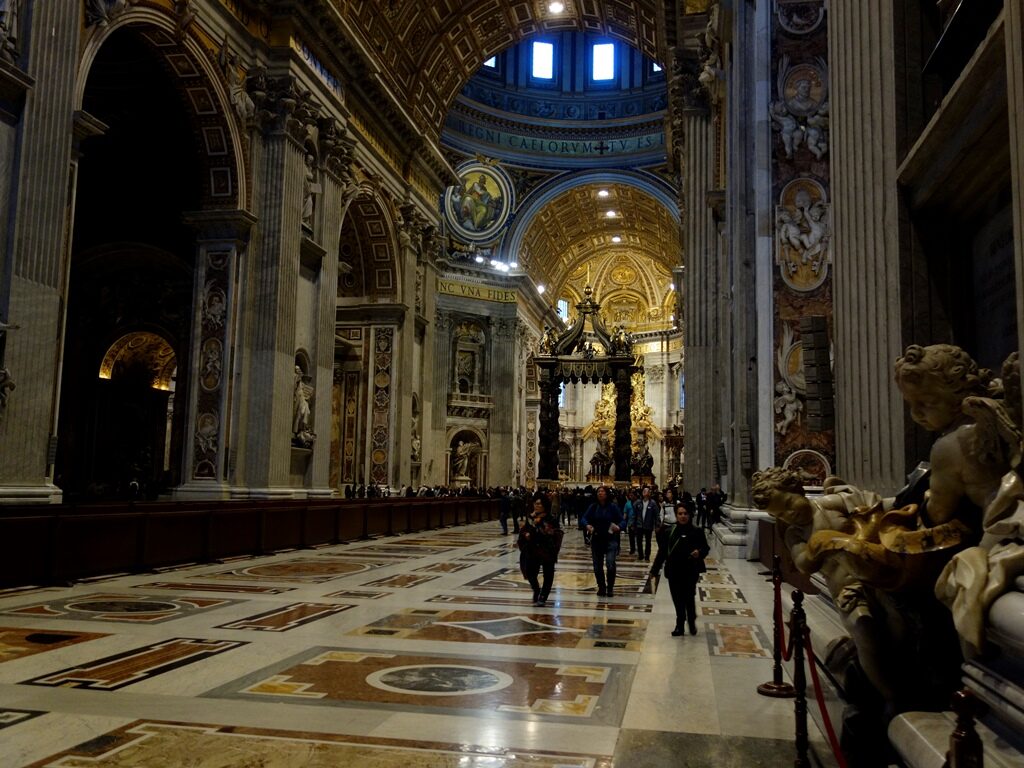
In the north east corner of St Peter’s basilica is The Pieta (meaning piety), carved out of a marble block by Michelangelo in 1500. This quite amazing piece of work is now displayed behind a thick glass screen after the hammer attack in 1972 by a 33 year old madman who broke off the Virgin Mary’s left arm and damaged her face.
Later in the Vatican Museum complex, I had booked to join a party of 35 English speakers wearing radio receivers to be welcomed by our young Italian guide who carried her green chiffon scarf aloft on a bamboo cane. She chided us for the Protestantism of our little northern country on the edge of the world and after the telling off, we were away down the long exquisite marble corridors with what seemed like the history of the world travelling past us. We were just a tiny group in the 20,000 visitors in the museum that day and for two hours inside those 20 miles of corridors; we followed the history being given below the green chiffon scarf. There was no time to stand and stare as our guide had to get us to the Sistine Chapel on time.
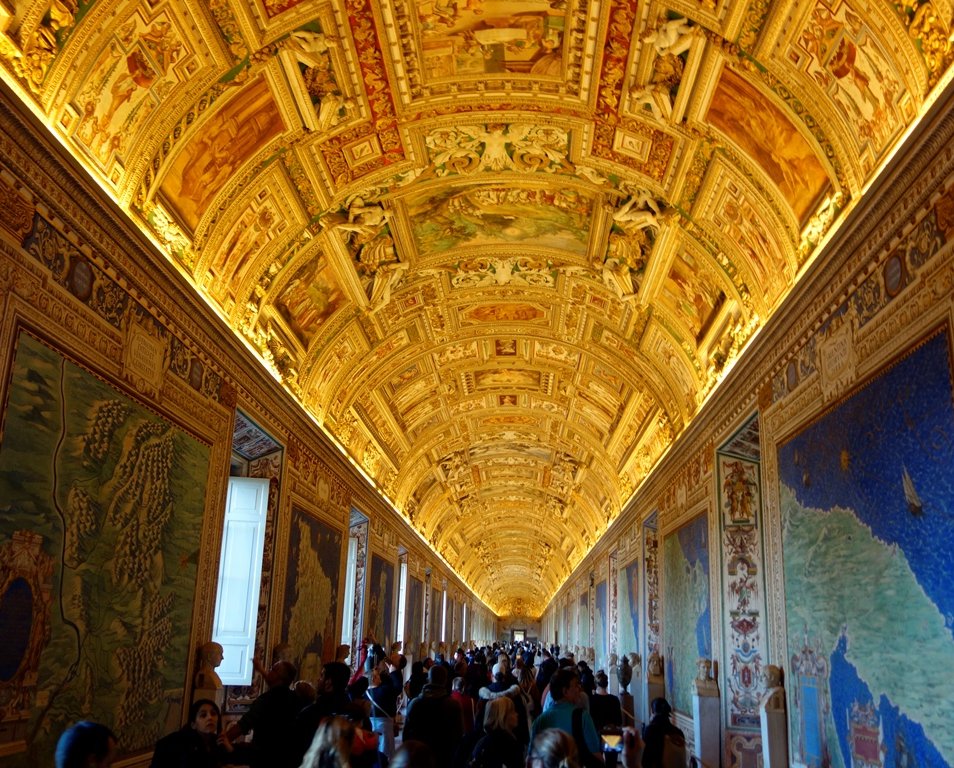
Rome is small enough for us to visit The Trevi Fountain, the Pantheon , the Piazza Navona and buy a piece of Italian Leather in a span of a few hours. The Navona is shaped as a long oval and is the old open air chariot racing stadium of Domitian (AD 51-AD 96 and son of Vespasian) where we sat at a pavement trattoria on a cool afternoon having lunch and watching people of different nationalities walking by. Everywhere touts were selling selfie camera sticks and everywhere they were being unselfconsciously used by their owners.
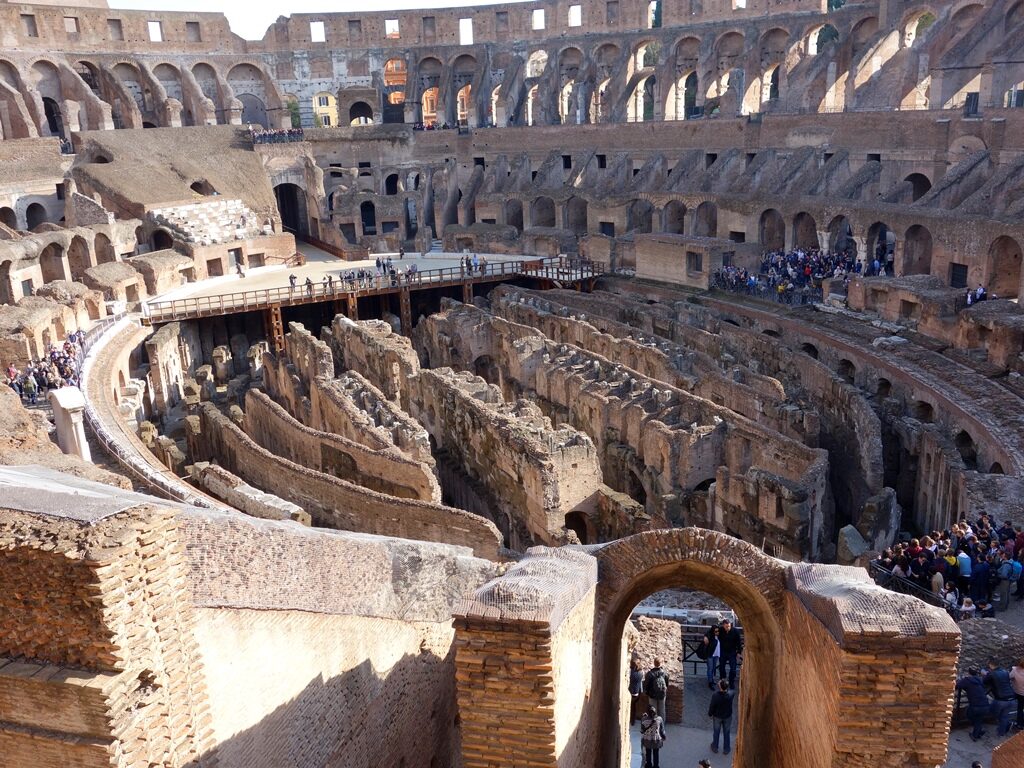
On another day we visited the Colosseum built by Vespasian in the years before 80AD and had a sunny walk around the historical Palatine Hill, one of Rome’s seven hills with its towering pine trees and old Roman buildings, once the home of Emperor Augustus.
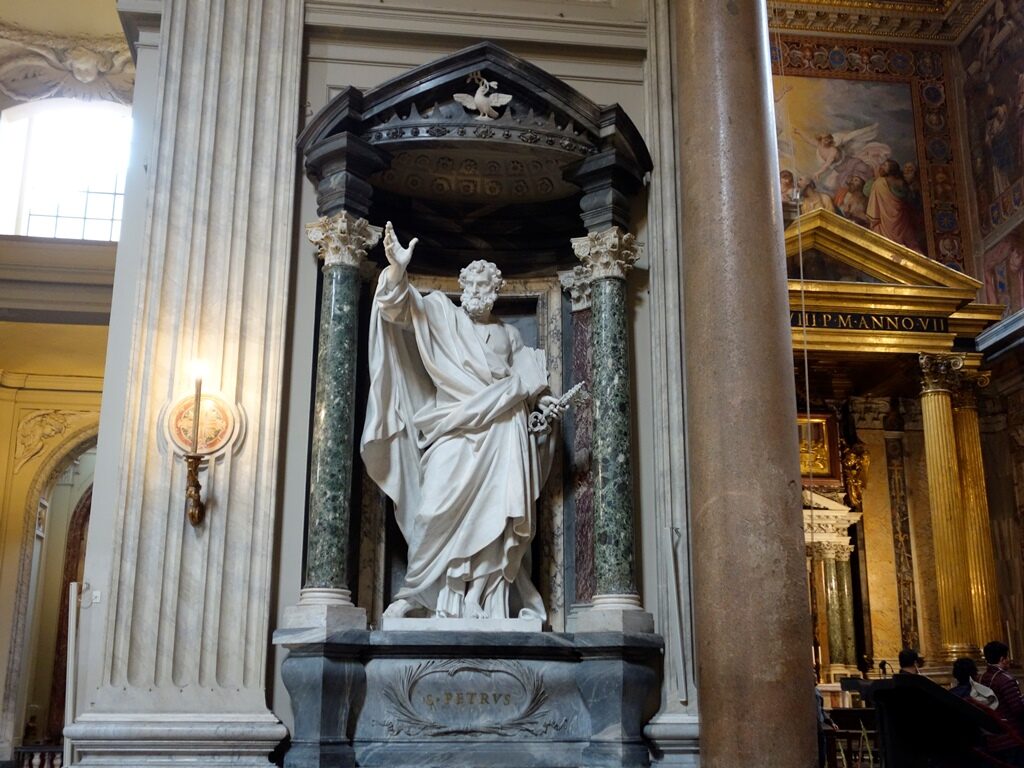
Fr Michael Koppel used to talk about the basilica of St John, Lateran and we resolved to see it. It is still Rome’s official cathedral dating back to the 4th century AD and sits on the south east boundary of the city. It was the principal pontifical church until the papacy moved to Avignon in 1309 AD. As with St Peter’s basilica, there has been approaching a thousand years of building without any reforming destruction, so from the gilt ceiling to the ancient marble floor, the sense of wonder is profound.
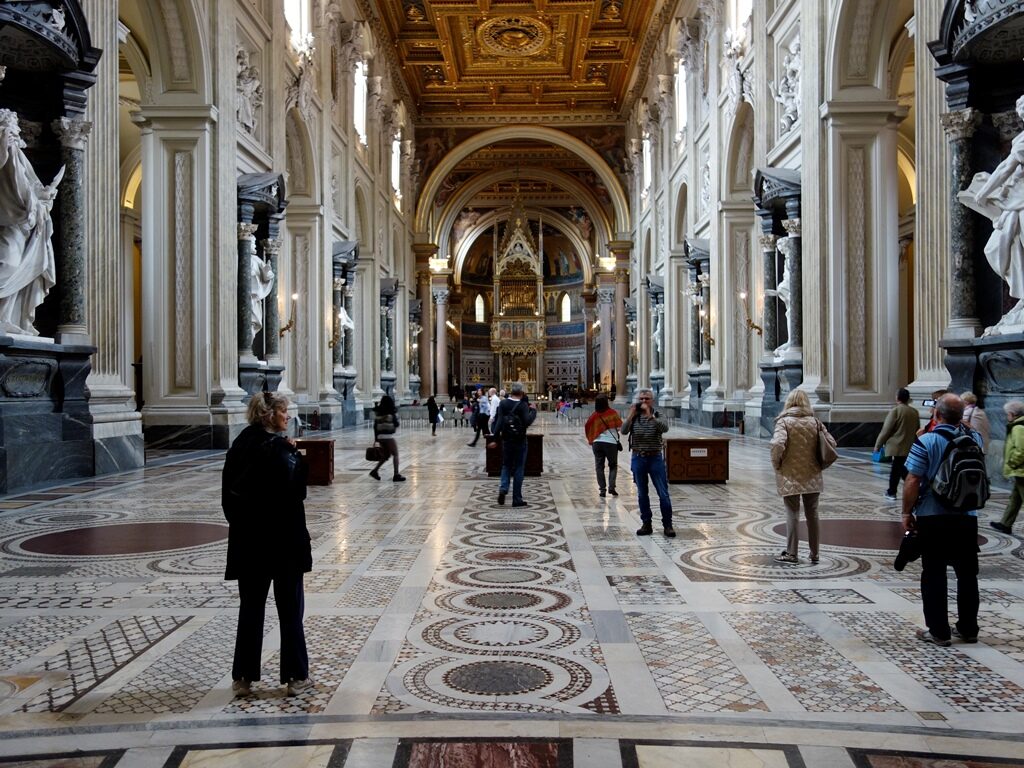
On our last morning the city transport was on strike so we took a taxi to visit Trastevere. This is a very old part of West Rome below the heights of Pza Garibaldi and outside the old Roman walls. The Basilica Di Santa Maria in Trastevere is yet another amazingly beautiful church but where isn’t in this extraordinary city? I slide my camera on its back across the floor to look straight upwards at the dome in the Lady Chapel and capture the ‘Assumption of the Virgin’ by Domenichino (1616).
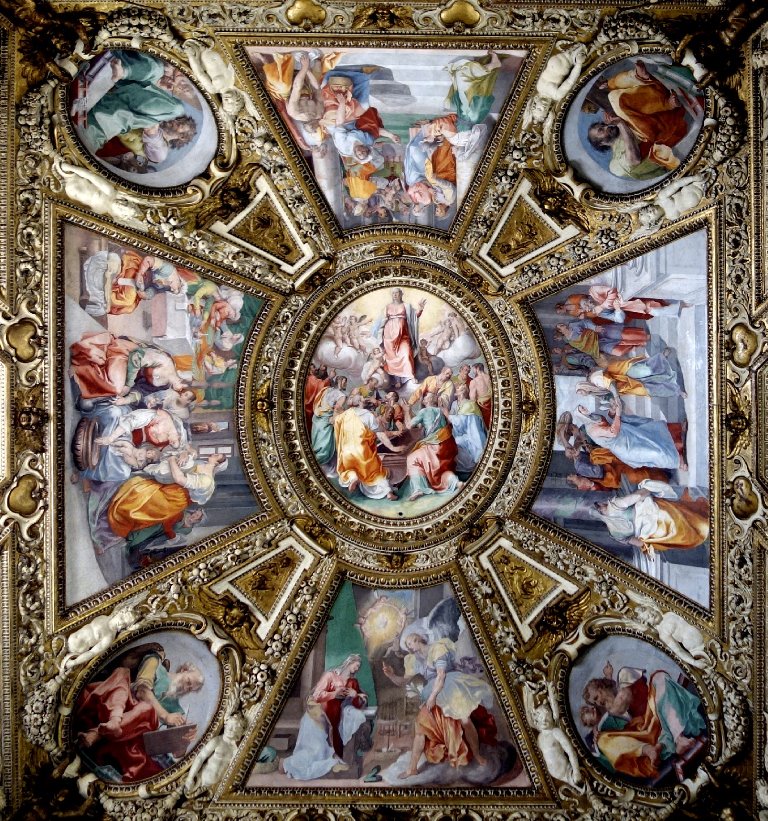
Outside in the Piazza we have a delicious brunch omelette billed for 16 Euros but by some mysterious legerdemain which is so common in Rome, we end up paying our smiling waiter 24 Euros and a tip. We catch our taxi and before long we are at the airport which is right next to Ostia, Rome’s ancient port. Inshallah, we will return to Rome one day, perhaps having learnt some Italian but not before having read more about this fascinating city.